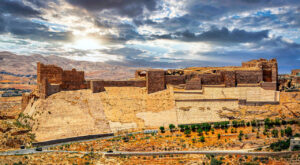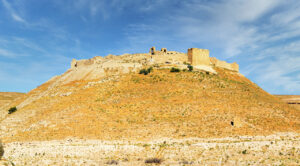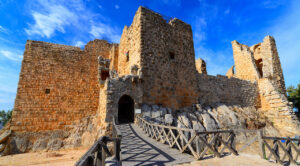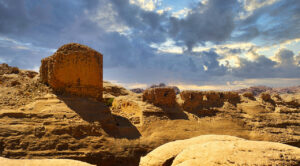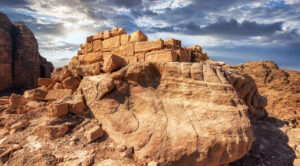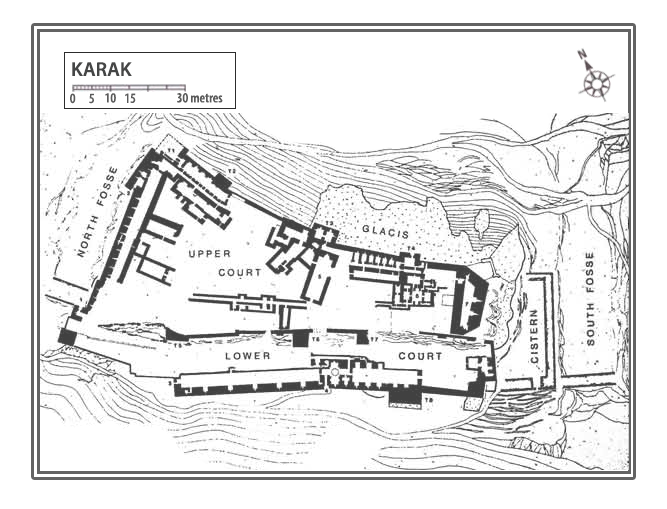The ancient Crusader Castle of Karak, later a Mamluk fortress, lies within the walls of the old city and is one of the popular attractions in Jordan. The stronghold that dominates the town was a place of legend in the battles between the Crusaders and the Islamic armies of Saladin. Now one of the most famous Crusader castles, in its days Karak was just one in a long line of defence, stretching from Aqaba in the south to Turkey in the north.
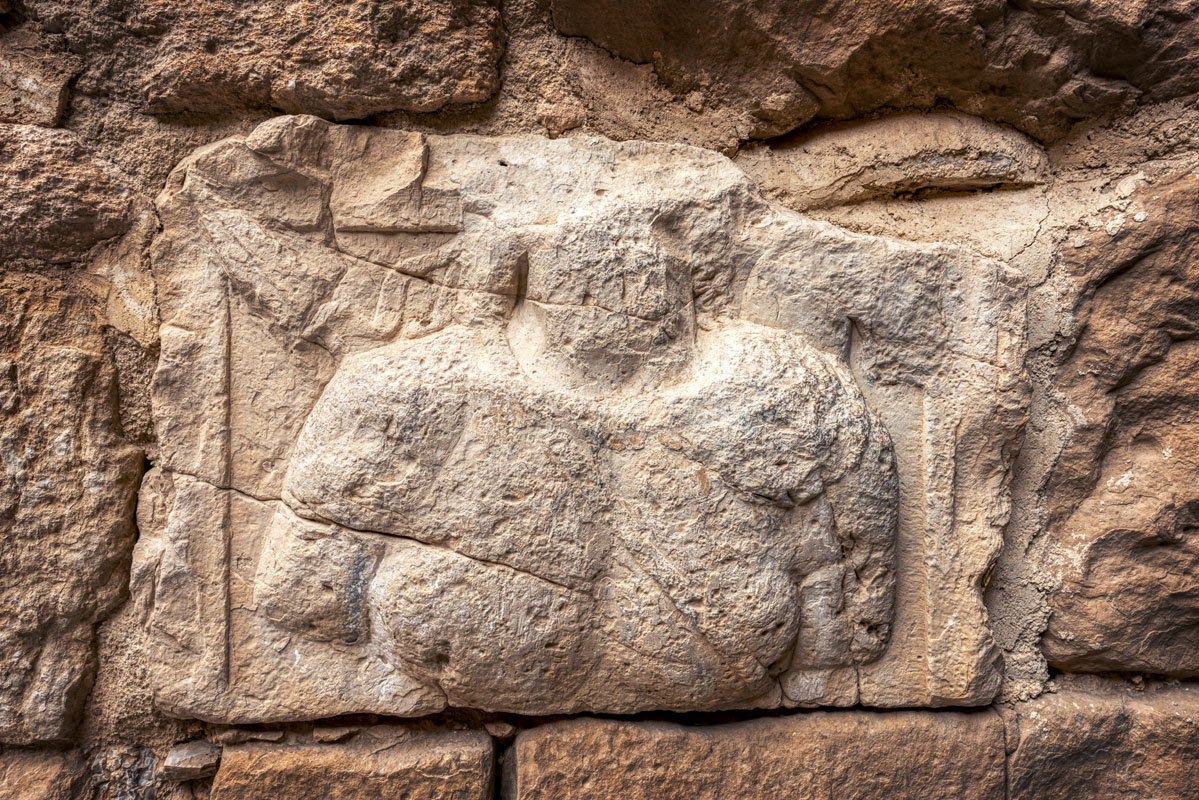
The imposing castle, which visitors can admire today, was built by the Crusaders in the mid-12 century AD and was the first castle built by the Franks that used a fortified tower structure – a notable example of Crusader architecture. It was the base of lord Raynald of Chatillon’s reckless and cruel campaigns and withstood several Muslim sieges, before finally falling into Saladin’s hands in 1187. Under the rule of Mamluk sultan Baibars from 1264 on, the castle was substantially renovated with stronger fortifications and additions such as the fortress keep at the north.
Karak Castle itself is a large wedge-shaped building of some 220 m in length and 125 m in width at the north end.
You enter the castle via the Ottoman Gate, to the left of which one can see the original postern or secondary gate concealed between tower and wall, which used to be accessed across a wooden bridge spanning the north ditch. The castle is built on two main defensive levels, separated by an inner wall. The upper court contains the main buildings, such as the Crusader church, the Mamluk keep, palace and mosque. The lower bailey with its row of underground galleries seems to have been principally used for storage and defence. The massive north front is strengthened by two corner towers while the east front has four towers, and a steep masonry slope or glacis running around the bottom of the outer wall from the middle of the east front to the south.
In the lower court of the castle is the Karak Archaeological Museum, which was opened in 2004 after renovation work. It introduces local history and archaeology of the region from prehistory until the Islamic era.
While Karak Castle had historically been used to protect the assets of crusader states in the Latin Kingdom of Jerusalem, today its job is much more mundane. Many people travel along the ancient King’s Highway to stop at Karak on their way to other tourist sites.
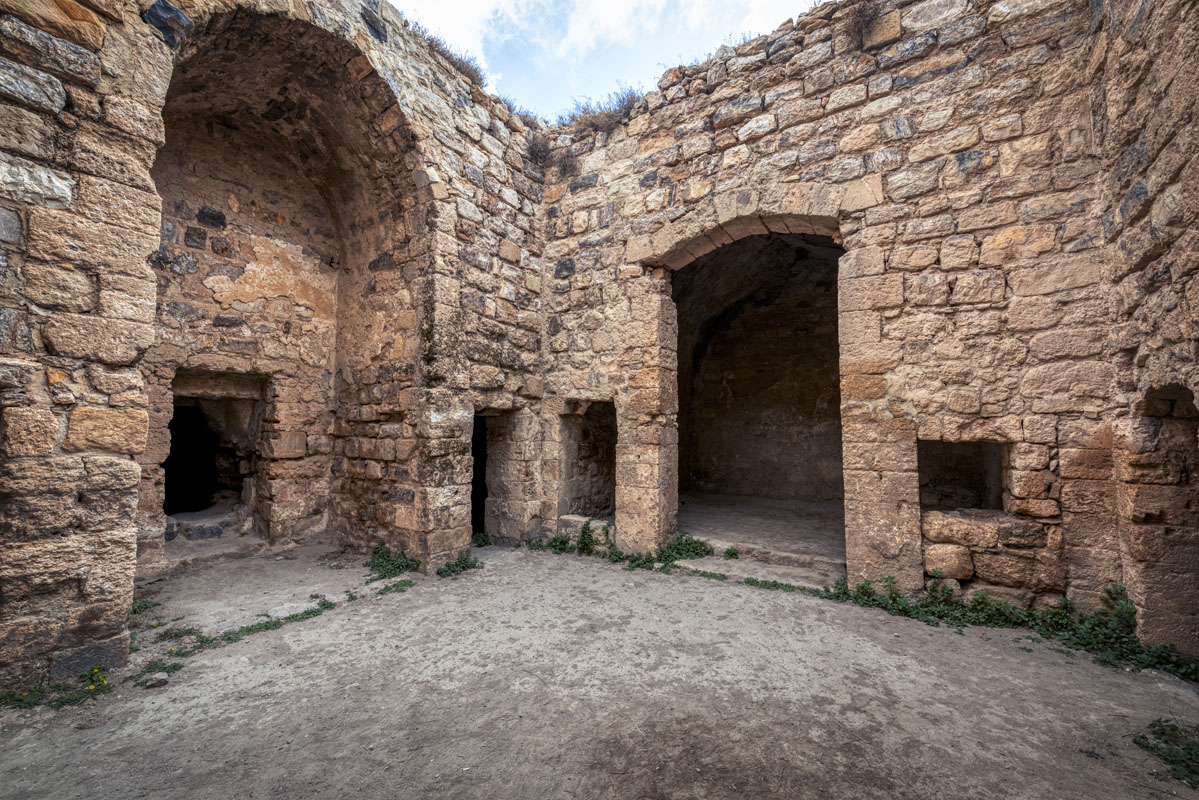
During antiquity, the castle was a prominent Arab Nabataean place, and main settlement; several Nabataean reliefs and sculptures have survived since that period. The city became a regional centre in Roman Arabia under the name Characmoba, and a diocesan town during the Byzantine period. It is featured as a walled city on the Madaba mosaic map.
Pagan was also Lord of Oultrejordain and Karak Castle became the centre of his power, replacing the weaker castle of Montreal to the south. Because of its position east of the Dead Sea, Karak Castle was able to control Bedouin herders as well as the trade routes from Damascus to Egypt and Mecca. His successors, his nephew Maurice and Philip of Milly, added towers and protected the north and south sides with two deep rock-cut ditches (the southern ditch also serving as a cistern). The most notable Crusader architectural feature surviving is the north wall, into which are built immense arched halls on two levels.
In 1176 Raynald of Chatillon gained possession of Karak Castle and was quick to harass the trade camel trains and even attempted an attack on Mecca itself. In 1183 Saladin besieged the castle in response to Raynald’s attacks although it was eventually relieved by Baldwin IV of Jerusalem. In 1184 Saladin attempted a second siege, however, just like the first siege of Karak, Saladin and his men left before a reinforcing crusader army could come to the castle’s aid. This siege only lasted four weeks. The last siege of the 12th century was led by Sad Al-Din, Saladin’s nephew, in 1188. This time, the Muslim army was not under the threat of crusader reinforcements and they successfully cut off supplies to the castle, and Karak surrendered several months after. With the fall of Karak, the Castle of Montreal, which had been replaced as the centre of the lordship by Karak, surrendered soon afterwards.
In 1263, the Mamluk Sultan, Baibars, enlarged and built a tower on the northwest corner. Under the Ayyubid Dynasty, Karak served as the administration centre for all of the regions of Jordan. By 1263, Karak was under the rule of the Mamluk Sultan Baybars and continued to remain an important administrative centre.
During the Ottoman Empire, it played an important role due to its strategic location at the crossroads between the Arabian Peninsula, Egypt and Greater Syria. In 1893, the Ottoman authorities appointed a governor resident in Karak Castle with a garrison of 1400, including 200 cavalries. Parts of the castle were reused.
On December 18, 2016, the castle was the site of a terrorist attack. Fourteen people were killed and 34 were injured, the majority being Jordanian security forces and local civilians. A Canadian tourist was also killed.
